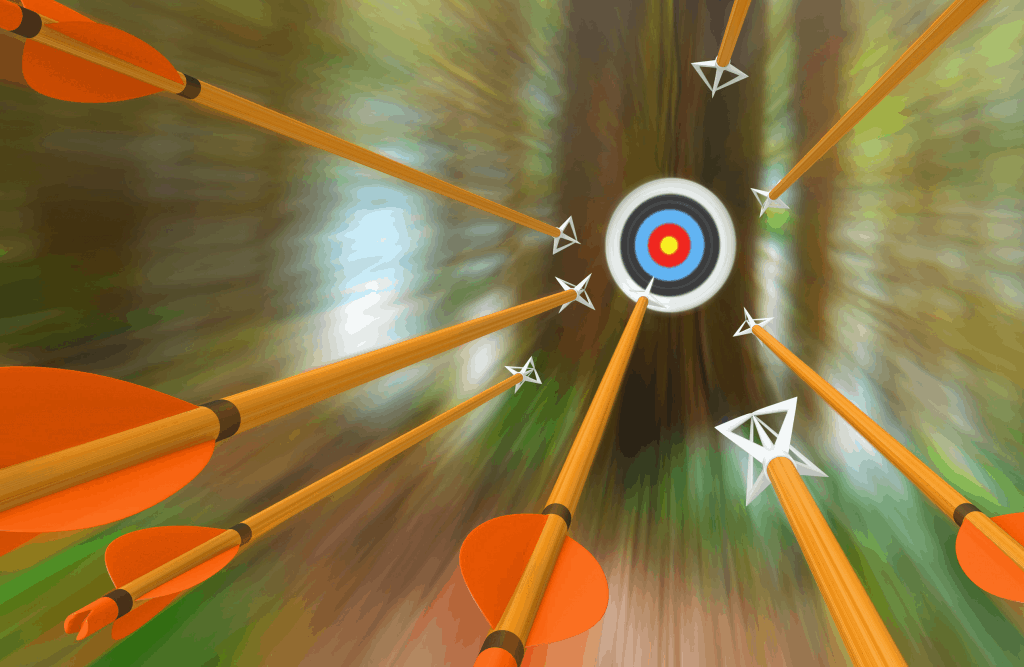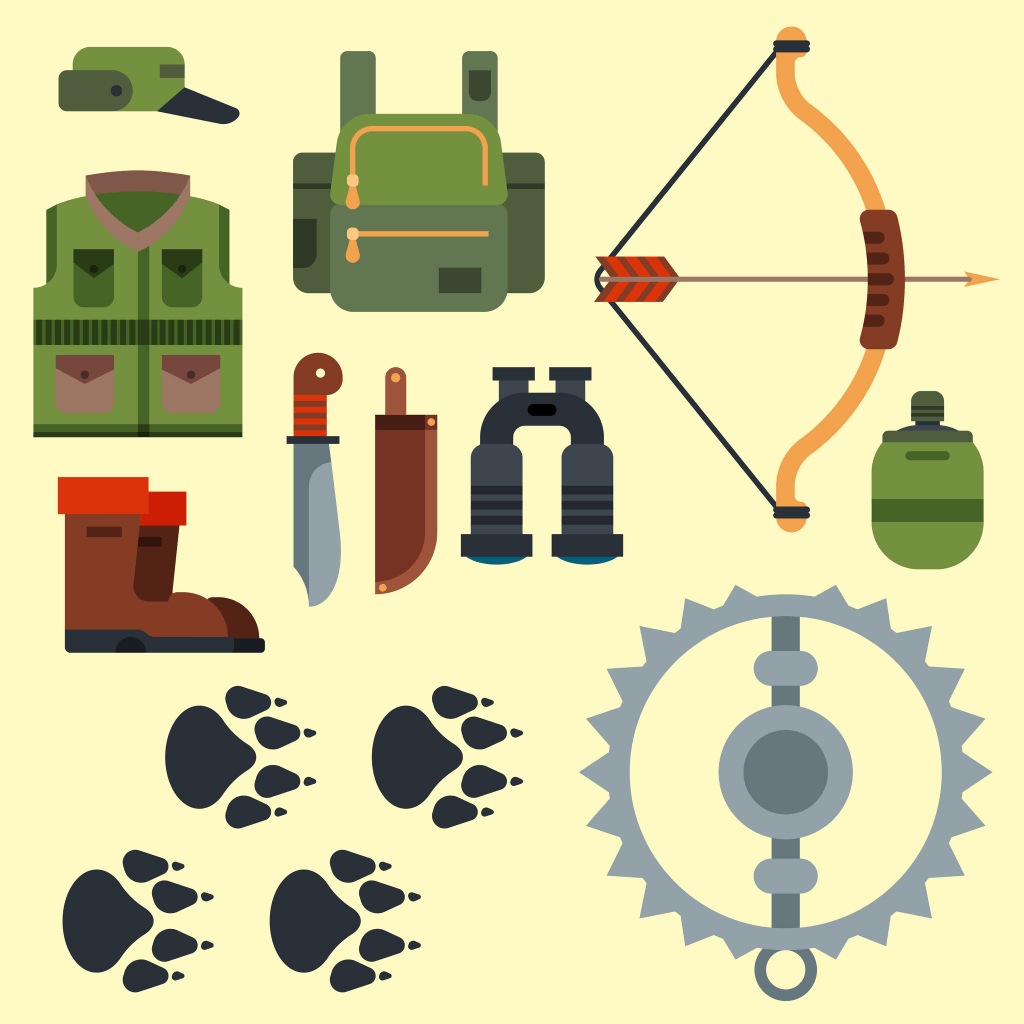
Compound bows have made improvements on a lot of the traditional bow’s capabilities: speed, accuracy, and distance. It’s common for archers to become preoccupied with one specific capability, and for those interested in distance, compound bows don’t disappoint.
A compound bow can shoot an arrow over 1,000 feet, but the farthest recorded shot that actually hit a target is 930.04 feet. Most archers stay within what is called the “effective range,” which is typically between 30 and 60 yards.
Though many compound bows have a very large range, especially when compared to traditional bows, the range in which a target can actually be hit accurately is generally much smaller.
The Effective Range of a Compound Bow
The effective range is so named because it is the distance within which most bowhunters can hope to make a kill shot.
The kill zone on a typical whitetail deer is usually less than ten inches in diameter.
That doesn’t give you a large target to aim at, so most bowhunters choose not to take the risk, and they get in as close as they can.
The effective range for most compound bow-wielding hunters is between 30 and 60 yards, with the majority staying in the 30 to 40-yard range.
A hunter who can take down any kind of game at even 60 yards is either highly skilled or highly lucky.
There are tales of 100-yard kills, but they are as difficult to believe as they are few and far between.
The difficulty is not usually in propelling the arrow that far. The difficulty is in sinking the arrow into whatever you were aiming at.
The farther the distance, the more energy your arrow is going to naturally lose.
On top of that, there are likely going to be forces working against your arrow such as wind, humidity, and maybe rain or snow.
The longer your arrow is subjected to these forces, the more off-course it will get, and a hunter can only do so much to foresee and combat those forces.
How a Compound Bow’s Range is Calculated
There are two main factors working to propel an arrow over long distances: the arrow’s speed and its kinetic energy.
Arrow Speed
First, let’s discuss the components necessary to make an arrow’s flight speedy.
The most important components are the bow’s draw weight and draw length and the arrow’s weight.
Some of the fastest bows on the market are advertised as being able to propel arrows at speeds up to 360 feet per second.
How did the manufacturers determine that speed?
The authority on bow speed is the International Bowhunting Organization (IBO).
Most, if not all, major bow manufacturers refer to the IBO’s speed testing standards to determine the bow’s speed and ensure that the ratings across companies remain consistent.
Per their specifications, most bows are tested with:
- 70-pound draw weight
- 30-inch draw length
- 350-grain arrows
Additionally, the speed rating you see attached to a certain bow is the speed the arrow is going at point-blank range, not the speed it’s going when it hits the target.
The likelihood that your bow is shooting at the precise rate of speed it’s supposed to reach is pretty low.
Most bows are actually shooting at close to 50 feet per second less than the advertised speed considering different draw weights, draw lengths, arrow weights, weather conditions, human error, and other factors.
This isn’t to say that compound bows aren’t shooting arrows at a fast rate of speed.
A bow that’s realistically shooting at 300 feet per second is still going at about 200 miles per hour.
That’s incredibly fast, and it’s part of the reason that compound bows are able to shoot arrow such far distances.
Kinetic Energy

Kinetic energy plays a large factor in the distance an arrow can cover as well.
In the world of physics, kinetic energy is described as the energy stored within a body in motion.
In this case, the body in motion storing the energy is the arrow, and when we refer to its kinetic energy, we’re referring to the force with which it will hit the target.
If you’ve ever struggled to pull an arrow out of a target, that’s because it had a lot of kinetic energy. Either that or you just need to hit the gym.
An arrow’s kinetic energy is directly related to its speed. The faster it flies, the more energy it will store up.
Makes sense, right?
To calculate the kinetic energy exactly, we need to factor in the arrow’s weight along with its speed.
The formula is (arrow weight) x (arrow speed) x (arrow speed) / 450,240.
So, if you have an arrow that is 350 grain traveling at a rate of 300 feet per second (divided by 450,240), it has a kinetic energy level of roughly 70 ft-lb.
Remember, however, that the kinetic energy we just calculated is the kinetic energy of the arrow immediately after it’s been released from the string when it has the most momentum.
It won’t have that same kinetic energy when it hits the target.
Surprisingly, it’s not always best to have maximum kinetic energy in your arrow.
Though a heavier arrow weight will increase your kinetic energy, it will also interact negatively with gravity, forcing your arrow down faster as it travels.
That’s why most bowhunters stay within a range of 30 yards, especially those who invest in weighty broadheads to take down their game.
Don’t count on the weight of your arrow to be exactly as the package said when you bought it, either.
When calculating the weight of your arrow to factor into its kinetic energy, you have to consider any and all the additions or alterations you have made to your arrow.
This may include:
- Shaft
- Vanes
- Nock
- Insert
- Tip
To accurately calculate kinetic energy, you will have to include the weight of each of these elements to determine your arrow’s total weight.
You may find that you want to reduce your arrow’s weight so that it can cross greater distances.
How to Improve Your Shot Range
Aside from simply cutting down on your arrow’s weight, there are a few other things you can do if you would like to expand your compound bow’s effective range.
Practice
There are a lot of human factors that will contribute to whether or not you’re able to propel your arrows as far as you would like.
If you aren’t sure whether you’re using proper posture, ask a friend to observe you shoot your compound bow or find a local archery range that offers lessons.
Additionally, you’re going to want to take it slow.
Don’t jump to a 60-yard distance from your target if you’re not hitting 100% of your shots at 50 yards.
Start at a reasonable 30 yards and then slowly increase the distance by five or ten yards, not stepping back until you’re able to hit the target with every arrow you shoot.
Accessories

There are a lot of accessories made specifically for compound bows to aid with aiming and accuracy.
Sights are a helpful addition to any setup, especially pin sights if you’re looking to shoot far distances.
It has also been said that thinner grips reduce hand fatigue, which can help you keep up your endurance to shoot long distances.
Remember that 930-foot world record for the longest shot that made its way to a target?
That shot was made by a Paralympic athlete who was born with no hands or arms.
Matt Stutzman was able to break the previous record set by an able-bodied person using only his feet and shoulders in 2015.
If you hope to shoot across incredible distances, just know that it can (and has) been done.
But, while becoming a world-record breaker does sound tempting, there isn’t much use for super long-distance shooting outside of that.
Most bowhunters and even target shooters are more concerned with precision accuracy, and it’s that skill that’s likely to get you the farthest in the sport of archery.
There are some instances where the ability to shoot over long distances can help you on a hunt, but the probability of you making an accurate shot is so small that the opportunity will rarely come up.
